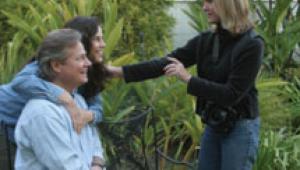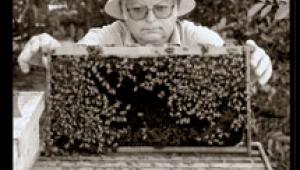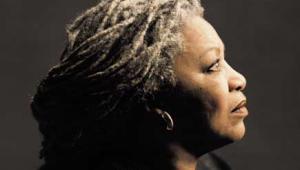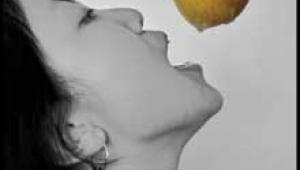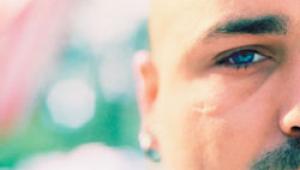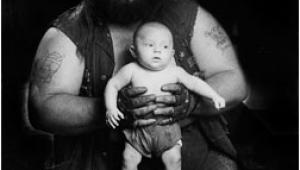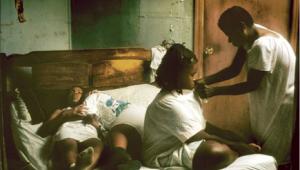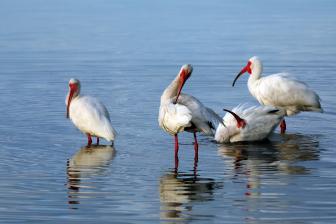I like all the pictures. They are absolutely wonderful photos of native Americans. - C Frederick Wehba
Rare Portraits of Native Americans Page 2
The monumental challenge of restoring the negatives was accepted by Earth Resources Observation Systems (EROS) Data Center, a data management, systems development, and research field center for the USGS. "We also maintain part of the archive of digital imagery," according to Mike Austad, Digital Data Specialist and industrial photographer at EROS. Restoring the damaged images was beneficial all the way around, says Austad, since the USGS needed historical photos, and "The Blue Cloud Abbey wanted to tap our knowledge on archiving and preserving the data that was there."
 |
|
|
Austad was in charge of restoring the images. Fungus on the emulsion was only one of the challenges that EROS initially faced, he says, as they had been stored in a basement for so long. Not to mention that "acid between the plates had started to eat away at the emulsion and the glass plates were broken," adds Napier. According to Austad, "Rather than trying to clean the negatives, which would damage the emulsion further, we decided to scan them." He added, "I noticed that they were in glass plates. The photographer did a good job."
 |
|
|
He noted that many of the images were "lantern slides," photos that were produced in the 1900s by developing positive images photographically, and then handpainting them with an organic dye or tinting process. Lantern slides were sandwiched between two glass covers and placed in a mat. The slides were projected in a "magic lantern," which was a slide projection system illuminated by kerosene or coal oil lamps, and then shown on a wall. Austad says less than half of these slides have been restored thus far.
 |
|
|
After scanning the negatives on
a flat-bed scanner at 1600 dpi to get an archival file, Austad scaled the working
files down to 300 or 400 dpi before he brought them into Photoshop. "In
this instance, the images are for historical reference, so we didn't want
to add anything that wasn't originally there. It was very painstaking.
A minimal amount of work was done to preserve accurate historical content,"
he pointed out. Historians were also called in to look at the images, date them,
and identify items that were pictured.
In terms of restoration, Austad says, "I used the Cloning and Healing
tools mostly, as well as Layers. Some filters were used in a limited way--just
straight-up methods that anyone who used Photoshop would do." Over the
two years that Austad worked on these images, he says, he used Photoshop versions
6, 7 and CS. "Photoshop is a wonderful tool for doing any type of retouching
at all; it's a wonderful program."
 |
|
|
An Ongoing Process
Austad burned the final images to CDs in high- and low-resolution printable
files and returned them to Blue Cloud Abbey. EROS also made prints on LightJet
and Fuji Pictography 3000 laser printers. Anything larger than 8x10 was output
on the LightJet printer. "Ultimately, we made 16x20 prints for Blue Cloud
Abbey," says Austad. "Everything actually belongs to them and the
Native Americans."
The 377 glass plate negatives are now part of a larger collection of over 50,000
images that Benedictine monks gathered as they traveled through the Dakota territory
ministering to tribal communities. However, there's still a large remainder
of images that haven't yet been restored and scanned, says Napier. "We're
doing a little strategy on how to move this project forward." He adds
that the USGS is seeking a grant to finish restoring these remaining images,
which, according to Napier, are more of a challenge than the others because
they're older and more damaged. "We'll find a way, but we
need help," he says. "There are definitely issues, but we'd
like to find a way to restore them. It will take time."
 |
|
|
Bridging the Gap
Around the first of August, 2004, these images will be shipped back to South
Dakota, where they'll appear at various events held at Indian reservations
throughout the state, says Napier. Some are still on display at Blue Cloud Abbey.
The compelling images found at the Abbey and restored by the USGS preserve a
wealth of history that the masses and more importantly, Native Americans, can
enjoy for years to come. They go a long way in telling part of our country's
story. As Gene Napier points out, "So much Native American history was
orally passed on, and these images help bridge the gap."
- Log in or register to post comments

